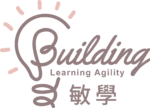This post is writing to introduce a reflection protocol: What? So What? Now what? to promote student reflection and critical thinking.

Critical Self-reflection
How do we guide students to reflect critically? I have been researching this question and hope to increase high-level thinking of my students. I have observed that my students’ reflections were superficial and vague. Students described their learning events and experiences, and there was no detailed analysis and evaluation of their learning performance.
Agile learners reflect on their learning experiences and analyze their strengths and areas for improvement. They evaluate their performance based on evidence gathered. This is an important process for the learners to evaluate their learning and analyze their performance. School can become very busy and fast-paced for teachers and students. “Rigor” is a catchphrase in education, and sometimes I think it causes more harm than good. The meaning of the word “rigor” is often misinterpreted, and as a result, students are bombarded with endless content, class and assignments.
For real learning to occur, I feel an individual must be given time and space to think and reflect. If we want to develop self-regulated learners, time and space must be provided for students to reflect and develop self-awareness of the challenges and obstacles they have encountered. Furthermore, through critical reflection, learners can become mindful of their feelings and learn to cope with different emotions. The process of recognizing different types of emotions and acquiring strategies helps students to develop grit. Reflection plays a critical role in learning, and we need to guide students to reflect critically and go beyond the superficial level.
Reflection Protocol: What? So What? Now what?
“What? So What? Now What?” is an excellent protocol to challenge students to reflect beyond the surface level and require them to evaluate and analyze their performance. I found providing prompt questions and sentence starters helpful and can scaffold students who are not yet comfortable thinking and reflecting independently. Additionally, reflection comes in different formate. It doesn’t always have to be written responses. Students should be encouraged to explore different ways of thinking.
Reflection Questions for Students
This work is licensed under a Creative Commons Attribution-NonCommercial 4.0 International License. In short, you can copy, distribute and transmit the work, but you must attribute the work. This work is not for commercial purposes.
Note: Portsmouth University granted permission to use the sentence starters. Full credits are given to Portsmouth University in this poster.
Reference
- University of Portsmouth. “Reflective Writing Introduction.” www.port.ac.uk, www.port.ac.uk/student-life/help-and-advice/study-skills/written-assignments/reflective-writing-introduction.
- Reflective writing: a basic introduction (PDF file) by University of Portsmouth








Excellent, and very helpful as I develop syllabus for my graduate students, thank you
Thank you. I’m glad this is useful to graduate students, too.